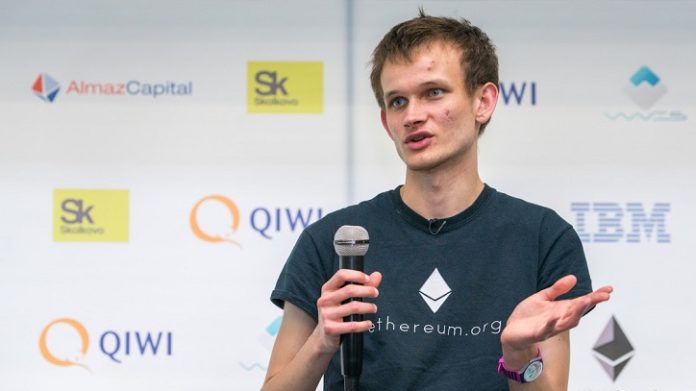Vitalik Says Ethereum Can Scale to 500 tx/s Using Zcash Technology
Ethereum co-creator Vitalik Buterin has a plan to scale the Ethereum network to accommodate a ~3,200 percent increase in transactions without the use of second-layer technologies such as Plasma.
Buterin: ZK-SNARKS Could Help ETH Scale to 500 tx/s
Writing on an ETH research forum in a post originally published on Saturday, Buterin said that Ethereum can borrow a technological innovation from privacy-centric cryptocurrency Zcash to “mass-validate” ETH transactions.
That technology, ZK-SNARKS, allows relaying nodes to “verify the correctness of computations without having to execute them” or “learn what was executed,” per a post on the Ethereum Foundation blog. Buterin elaborates that relayers can batch transactions together and then publish a ZK-SNARK to prove their validity, greatly compressing the amount of data stored in the blockchain while keeping all transactions on-chain.
He wrote:
“There are two classes of user: (i) transactor, and (ii) relayer. A relayer takes a set of operations from transactors, and combines them all into a transaction and makes a ZK-SNARK to prove the validity, and publishes the ZK-SNARK and the transaction data in a highly compressed form to the blockchain. A relayer gets rewarded for this by transaction fees from transactors.”
Buterin estimates that the integration and adoption of ZK-SNARKS could allow Ethereum to process a maximum of around 500 transactions per second, up from the current cap of approximately 15. That not only represents a 3,200 percent increase in network capacity but also accomplishes this feat apart from Plasma and other second-layer scaling solutions that increase network capacity by moving the majority of transactions off the main blockchain while retaining its security. If used in tandem with second-layer technologies following their eventual launch, the scaling improvement would be even more pronounced.
ETH Must Scale to Make dApps Mainstream
Such scaling improvements are crucial if Ethereum hopes to achieve mass adoption. As CCN recently reported, decentralized applications (dApps) that run on Ethereum have struggled to achieve widespread adoption, and only a few projects (mostly decentralized exchanges) have more than 500 daily users.
If one or more dApps does build a large user base, it would rapidly clog the Ethereum blockchain and send gas fees soaring. This already happened last December, shortly after the launch of CryptoKitties. At its peak, the dApp had around 14,000 daily users, a minuscule number compared to traditional web applications but enough to visibly disrupt the ability of users to transact on the Ethereum network. One startup even postponed its initial coin offering (ICO), citing CryptoKitties-linked congestion.
Buterin isn’t the first developer to suggest that adapting Zcash-based technology to Ethereum could make the latter’s protocol more robust. In early 2017, CCN reported that a group consisting of researchers from both organizations had launched “Project Alchemy,” an initiative to add zero-knowledge proofs to Ethereum to help anonymize the protocol, with a particular eye toward ensuring that smart contract applications such as electronic voting can be executed transparently without sacrificing user privacy. Previously, the group had teased plans to build a decentralized cryptocurrency exchange (DEX) that would allow transactions between the two blockchains.

